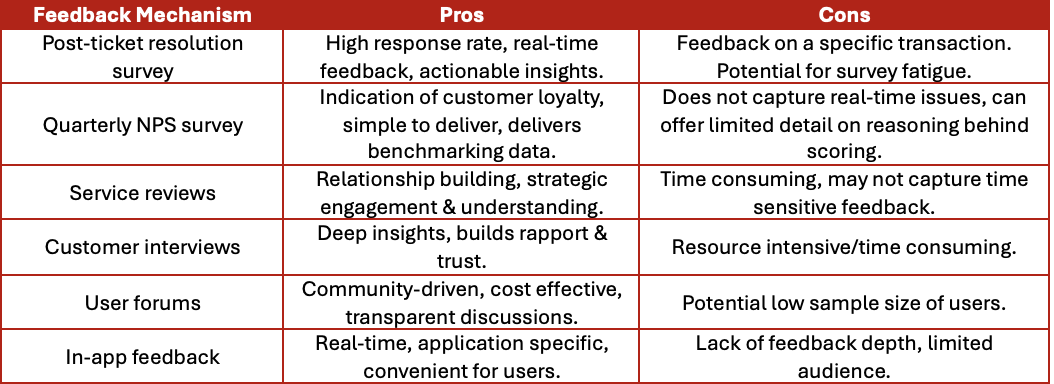In this blog series, we’ve been looking at the value service management activities can bring to MSPs. Core elements like consistent incident management, effective change management, and structured knowledge management are crucial for building a solid foundation. But there’s another key factor that often gets overlooked: experience management.
This series is designed to give MSP professionals actionable guidance to help you stay ahead.
Questions to Consider:
- Do you really know what your customers think of your service? Are you meeting their expectations?
- Do your support teams understand what matters most to your customers? Do they know critical information like business priorities, key services, and peak trading periods?
- Could focusing on experience management give your MSP an edge over the competition?
Why Experience Matters
In the world of MSPs, it’s no longer enough to simply meet your SLAs. Sure, SLAs track things like response times and resolution rates, but they often miss what really matters: the customer experience. Without considering this, it’s easy to find yourself meeting targets on paper but leaving clients unsatisfied.
Think of it like a train journey – you buy a ticket that guarantees departure and arrival times, which is similar to your typical SLA. But what really makes or breaks the experience is the journey itself: Did you get a seat? Did the Wi-Fi work? Were the staff polite?
Experience management can make all the difference by improving the value your customers get while also boosting their loyalty. In this post, we’ll explore some simple, budget-friendly ways to start introducing experience management into your operations.
As Maya Angelou once said: “People will forget what you did, but people will never forget how you made them feel.”
Feedback is a Gift
Whether it’s good, bad, or somewhere in between, feedback is always a valuable gift. It provides insights into how your clients see your services and what matters to them, helping you pinpoint areas for improvement.
It’s important to think about both how you gather feedback and how you use it. Being transparent about how customer feedback is used will help build trust and encourage more engagement.
Here are a few ways to collect feedback:

The key is to establish feedback mechanisms that feel natural to your clients. This will help ensure you get honest, useful insights that drive meaningful improvements.
Customising the Experience
Offering a personalised support experience is what separates great support providers from the rest. Each customer is unique, and their support needs will vary based on things like technical capabilities, seniority, or workload pressures.
Delivering generic support will probably keep most customers happy most of the time. But helping your support analysts understand what truly matters to each customer can take your service to the next level. Encourage your team to engage directly with clients, spend time with their staff, and learn the nuances of their business, like:
- What are their busiest periods?
- Which services are mission-critical?
- Who are their key stakeholders?
Once your team has a good grasp of this information, they can offer more proactive, customised support. Cross-train staff, document key findings, and share knowledge across the organisation, ensuring everyone can deliver a tailored service. These insights are also useful for technical project teams, as they help ensure that new implementations align with the client’s needs.
By aligning your operations with your client’s goals, you build stronger, more meaningful partnerships.
Could Experience Management Give You the Competitive Edge?
In a market full of MSPs offering similar technical services, experience management can set you apart. Clients who feel valued and understood are far more likely to stay loyal, helping improve your retention rates.
Traditionally, MSPs have focused heavily on support SLAs, often with penalties for missed targets. This can create a culture of self-preservation instead of one focused on continuous improvement and collaboration. If the goal is exceptional service, why focus on the negatives?
Consider offering incentives in your support contracts that reward positive outcomes, co-created with the client to match their needs. Here are some examples:

By using positive incentives instead of penalties, you create a more collaborative relationship, motivating teams to work together and deliver better results.
Improving Your Client Experience
Ready to find out how you can provide a better experience for your clients? Contact us today to explore how experience management can help you better understand your clients, improve satisfaction, and build long-term loyalty. Reach us at PMO@barclayrae.com or visit www.barclayrae.com to learn more.




